
News & trends from Nicolet Insurance Services for crop farmers ~ Issue 2, 2023
Important Crop Insurance Dates
May 21st – Insurance ends on 2022 spring seeding.
July 15th – Deadline to submit acreage reports.
July 31st - Deadline to add 2024 fall seeding coverage.
What is the final planting date?
The final planting date is the last day the crop can
be planted in your county and still maintain 100%
of the insurance guarantee on your multi-peril
crop insurance (MPCI) policy.
What is the late planting period?
The late planting period is a window of time, after the final planting date, where your crop can still be insured at a reduced rate. If you choose to plant your crop within the late plant period, your MPCI guarantee will be reduced 1% per day for every day that it is planted late (Ex: 5 days late = 5% reduction to the guarantee, 10 days late = 10% reduction to the guarantee, etc.). Some crops, like forage seeding, do not have a late planting period. New seeding planted after the final planting date for your county is uninsurable.
Reference the planting maps below to find the insurable planting dates for your crop.
2023 Crop Insurance Base Prices:
| Corn (Grain) | $5.91/bu. |
| Corn (Silage) | $44.50/ton |
| Soybeans | $13.76/bu. |
| Winter Wheat | $8.45/bu. |
| Spring Barley | $5.59/bu. |
| Oats | $4.28/bu. |
| Forage Production (Alfalfa) | $185/ton |
| Forage Production (Red Clover) | $130/ton |
Late Plant Periods
| Corn | 25 days |
| Soybeans | 25 days |
| Oats | 25 days |
| Barley | 25 days |
What if I am prevented from planting my crop?
Some multi-peril crop insurance plans include prevented planting coverage. Producers must meet very specific criteria to qualify for prevent plant indemnities. Some of the basic requirements include:
• Prevent plant claims must be filed after the final planting date for your county AND within 72 hours of you deciding you will not be able to plant.
• Generally, you must have a minimum of 20 acres of prevent plant to qualify (or 20% of your total acreage in the unit – whichever is less).
• Prevent plant fields must have been PLANTED, INSURED, & HARVESTED in at least one of the last 4 crop years to be eligible.
• Prevent plant must be general in your surrounding area (other producers must be prevented from planting acreage with similar characteristics).
If you find yourself unable to plant your crop this year, it is important to contact your crop insurance specialist early in the process. Your insurance specialist will review your policy and explain your options.
Is replant covered?
Many multi-peril crop insurance policies include replant coverage. Producers must meet specific acreage and location requirements to qualify for replant indemnities. Some of the basic requirements include:
• A notice of loss must be filed, and a crop adjuster must authorize the replant BEFORE you replant.
• Generally, you must have a minimum of 20 acres of replant to qualify (or 20% of your total acreage in the unit – whichever is less).
• Crops planted before the “earliest planting” date for your county are ineligible for replant indemnities (see planting maps on back).
If you need to replant this spring, please contact your insurance specialist as early as possible. Your insurance specialist will review your policy and explain your options.

Check Your Hay & Wheat Fields
Contact your crop insurance specialist if you see signs of winterkill damage in your hay or wheat fields this spring. Your insurance specialist will file a notice of loss and arrange for a crop adjuster to come out and inspect the fields. Also, if you intend to eliminate any insured hay or wheat this spring, a crop adjuster must appraise those fields BEFORE you destroy the crop and put the fields to a different use. No claim will be paid on acreage that is destroyed without an appraisal.

July 15th - Acreage Reporting Deadline
July 15th is the deadline to submit acreage reports to your insurance specialist. Producers have multiple options for reporting their acreage including:
• Precision Acreage Reporting – If you utilize precision planting equipment, your insurance specialist can import your precision acreage data into your policy.
• On Farm Reporting – Your insurance specialist can come to your farm and go through your planting maps with you.
• Electronic Reporting – If you want to email your planting data to your insurance specialist, we can complete your acreage reports and send them to you to sign electronically.
Your insurance specialist can also push your completed acreage reports to FSA to help streamline the overall reporting process. Let us know when you finish planting.

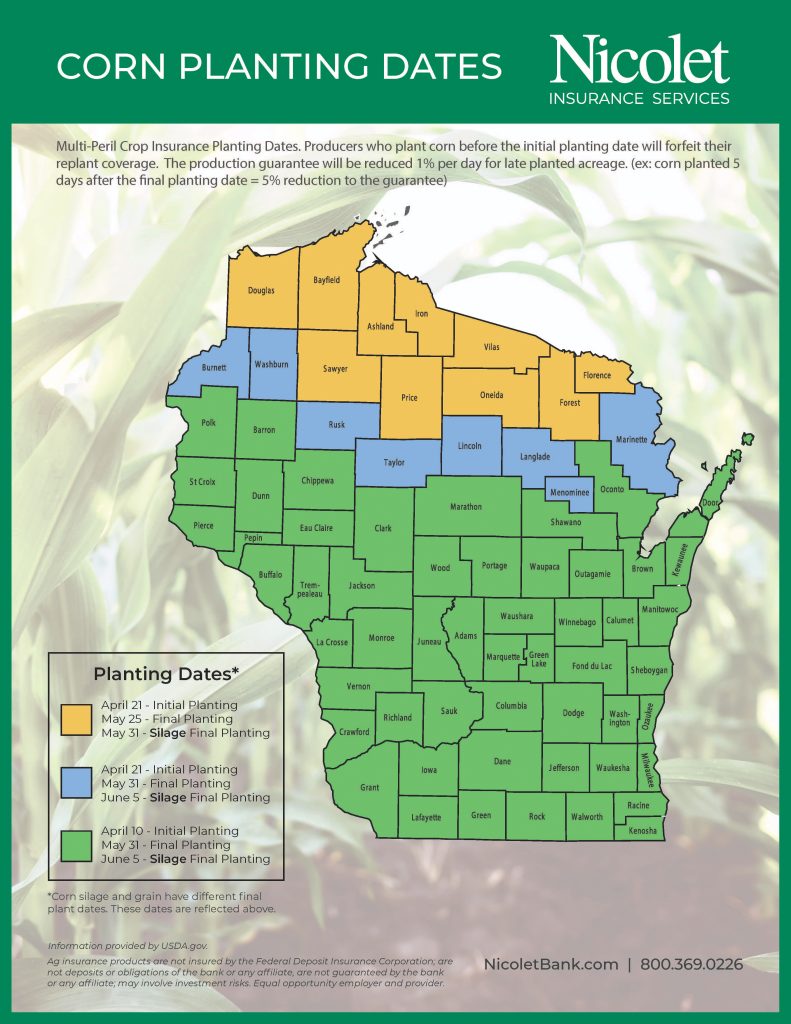
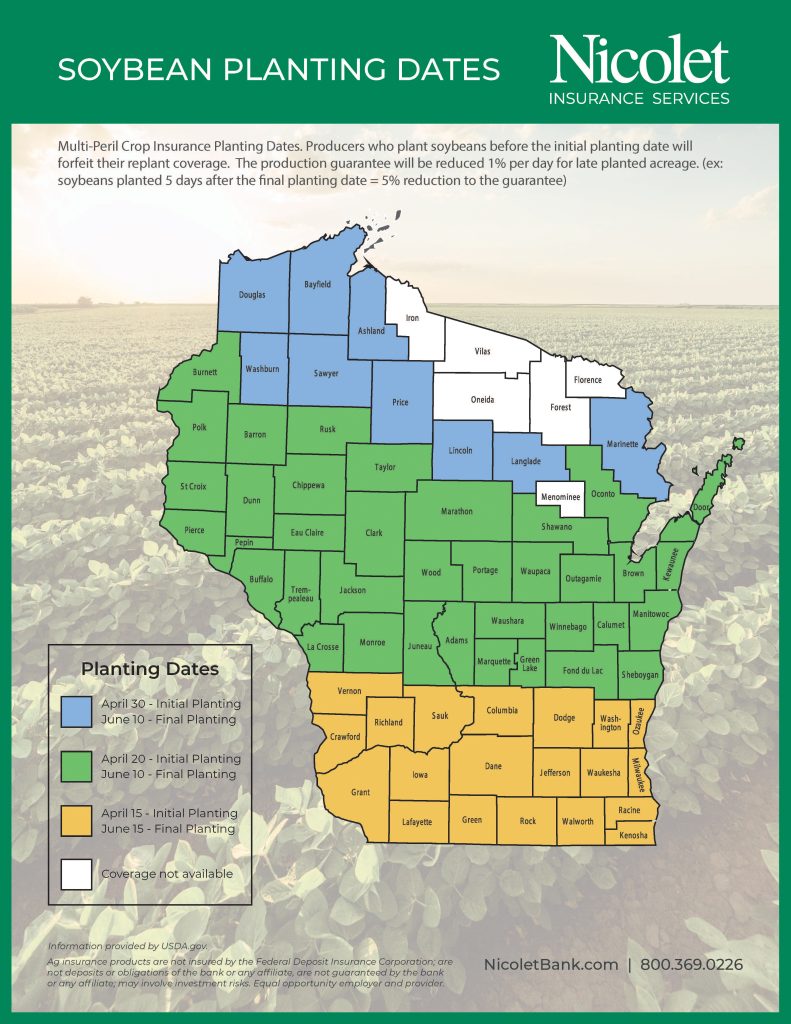
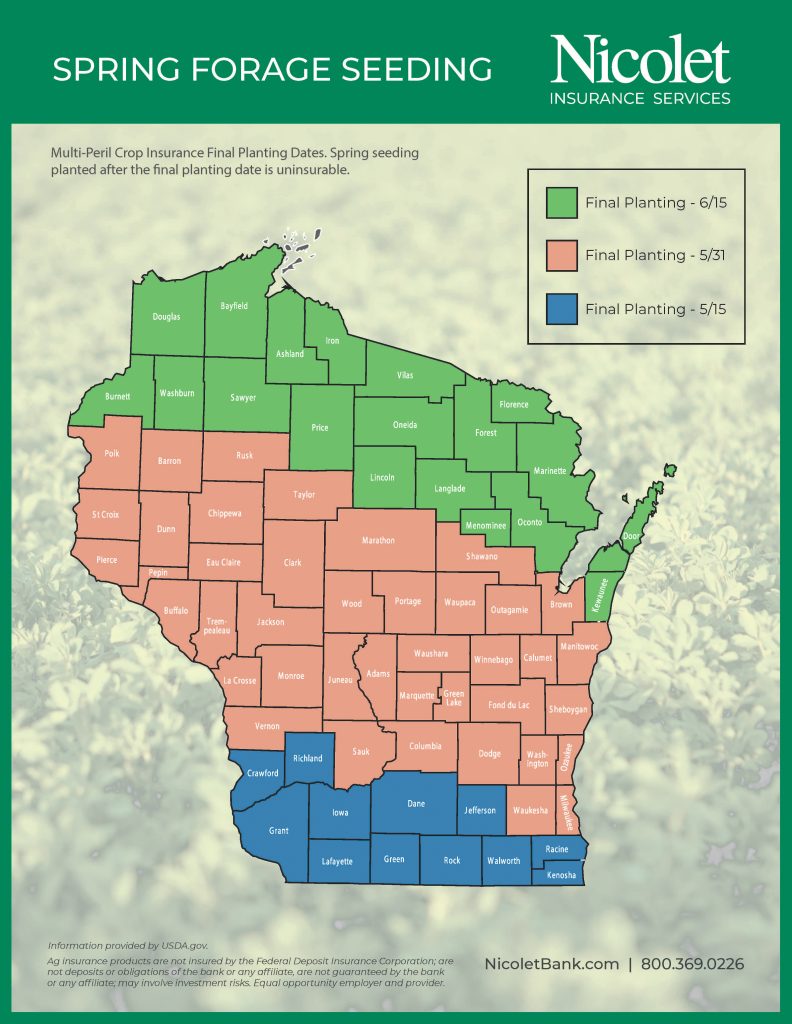
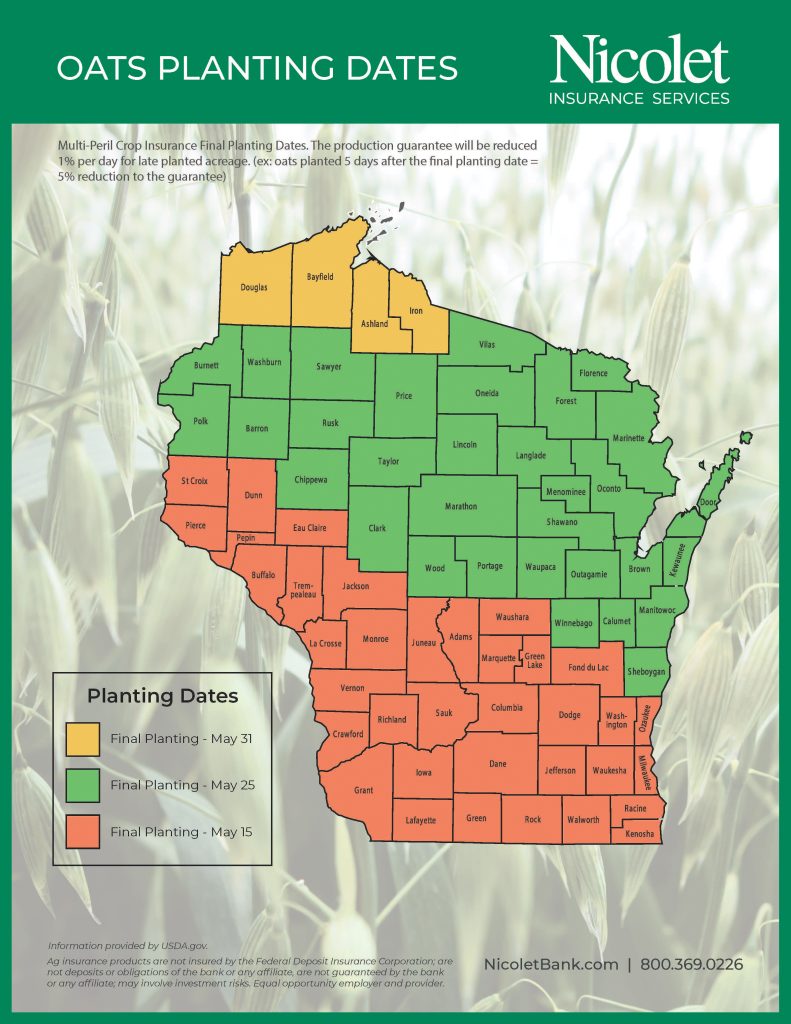
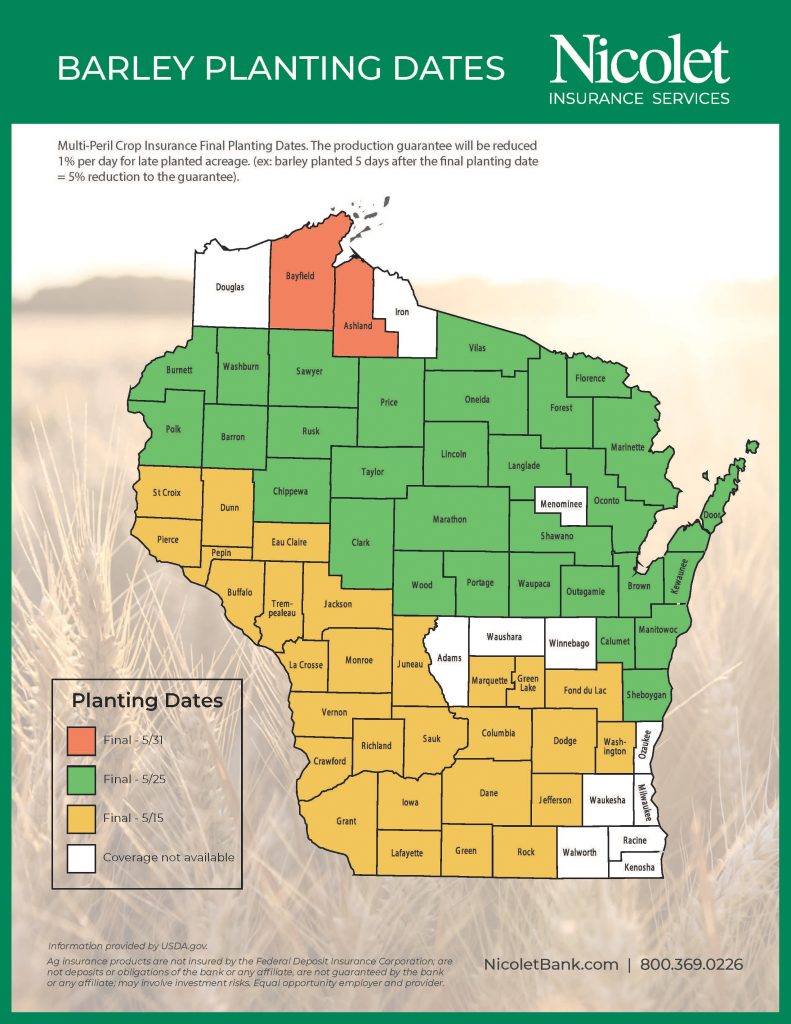
Ag Insurance products are not insured by the Federal Deposit Insurance Corporation; are not deposits or obligations of the bank or any affiliate; are not guaranteed by the bank or any affiliate; may involve investment risks. Equal opportunity employer and provider.








